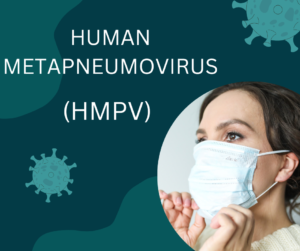Human Metapneumovirus (HMPV): Overview, causative agent, Symptoms, treatment, and many more
After several social media images allegedly depicting overcrowded hospitals, there has been a lot of talk online about China fighting another epidemic. According to reports, China is currently facing another pandemic five years after the terrible COVID-19 pandemic that killed millions of people and led to protracted lockdowns.
Human metapneumovirus (HMPV) is currently rife in China, and social media films allegedly depict overworked healthcare systems and crowded hospitals. Health professionals have expressed alarm about HMPV, a respiratory virus that affects several Asian nations.

Recent cases detected include pathogens such as the rhinovirus and human metapneumovirus, with cases of the human metapneumovirus among people under 14 showing an upward trend, especially in northern provinces,” according to a report by Reuters.
The World Health Organization (WHO) and Chinese authorities have not yet proclaimed a state of emergency, despite reports and social media posts describing a disaster. Given that the increase in infections occurs during the winter, when respiratory ailments usually reach their peak, the trend is being investigated. According to studies, the HMPV is spreading quickly together with several other viruses, including Covid-19, Mycoplasma pneumonia, and influenza A.
China, however, has dismissed the flu pandemic and declared that travel is safe there. Regarding allegations of Human Metapneumovirus (HMPV) from China, India’s health ministry stated again that there is no need for concern and that they are keeping an eye on the situation.
Why is the HMPV virus on the rise in China?
According to the United States Centers for Disease Control and Prevention (CDC), HMPV was identified in 2001 and is a member of the Pneumoviridae family, which is also the family that includes respiratory syncytial virus (RSV). It usually results in upper and lower respiratory infections with symptoms that resemble the flu or the common cold.
Both upper and lower respiratory illnesses are brought on by the respiratory virus HMPV. All age groups are affected, but the CDC states that young children, the elderly, and people with weakened immune systems are the most at risk.
Symptoms of HMPV
Symptoms commonly associated with HMPV, as noted by the CDC, include: cough and runny or stuffy nose, fever, sore throat, wheezing, or shortness of breath in severe cases. In some cases, the infection can escalate to bronchitis, pneumonia or asthma exacerbations.
Who is in danger?
Older adults, especially those over 65, children under five, especially babies, people with compromised immune systems, and people with long-term respiratory disorders like COPD or asthma are all at increased risk.
How is HMPV transmitted?
HMPV is transferred by coughing or sneezing, touching or shaking hands, coming into close contact with contaminated surfaces, and then touching the mouth, nose, or eyes. between temperate regions, HMPV circulates between late winter and spring, according to the CDC.
What can you do to prevent it?
The CDC recommends the following steps to reduce the risk of HMPV and other respiratory illnesses:
1. Wash hands frequently with soap and water for at least 20 seconds
2. Avoid touching your face with unwashed hands
3. Wear masks in crowded places wherever there is outbreak
4. Stay home when sick so that spreading of virus can be prevented
5. Regularly clean frequently touched surfaces
Testing and diagnosis
According to the CDC, the infection with HMPV can usually be confirmed by:
Direct detection of viral genome by nucleic acid amplification test (NAAT).
Direct detection of viral antigens in respiratory secretions using immunofluorescence or enzyme immunoassay. Routine testing is rare unless symptoms are severe or there’s an outbreak.
Treatment options
There is no specific antiviral treatment or vaccine for HMPV. As per the Cleveland Clinic, management focuses on alleviating symptoms:
1. Stay hydrated and take proper rest
2. Use over-the-counter (OTC) medications for pain, congestion, and fever.
3. Severe cases may require hospitalisation for oxygen therapy or intravenous fluids
When to need medical help
The Cleveland Clinic advises contacting a medical professional if symptoms:
-If, after a few days, things get worse
-Include cyanosis (bluish skin) or trouble breathing.
-occur in conjunction with long-term illnesses like asthma or COPD.
Common factor between HMPV and COVID-19
According to WebMD, there are numerous similarities between HMPV and COVID-19, including the fact that both viruses spread through respiratory droplets and induce respiratory symptoms like coughing, fever, congestion, sore throat, and shortness of breath.
Hospitalization may be necessary in severe situations. According to an NDTV report, HMPV usually peaks in the winter and spring, in contrast to COVID-19, which can spread all year round because of changing varieties.
According to studies, after COVID-19 limits were removed, HMPV cases in some areas may have tripled. Immunity was probably reduced by the decrease in viral exposure during lockdowns, which led to a spike in respiratory infections after safety measures were loosened.
